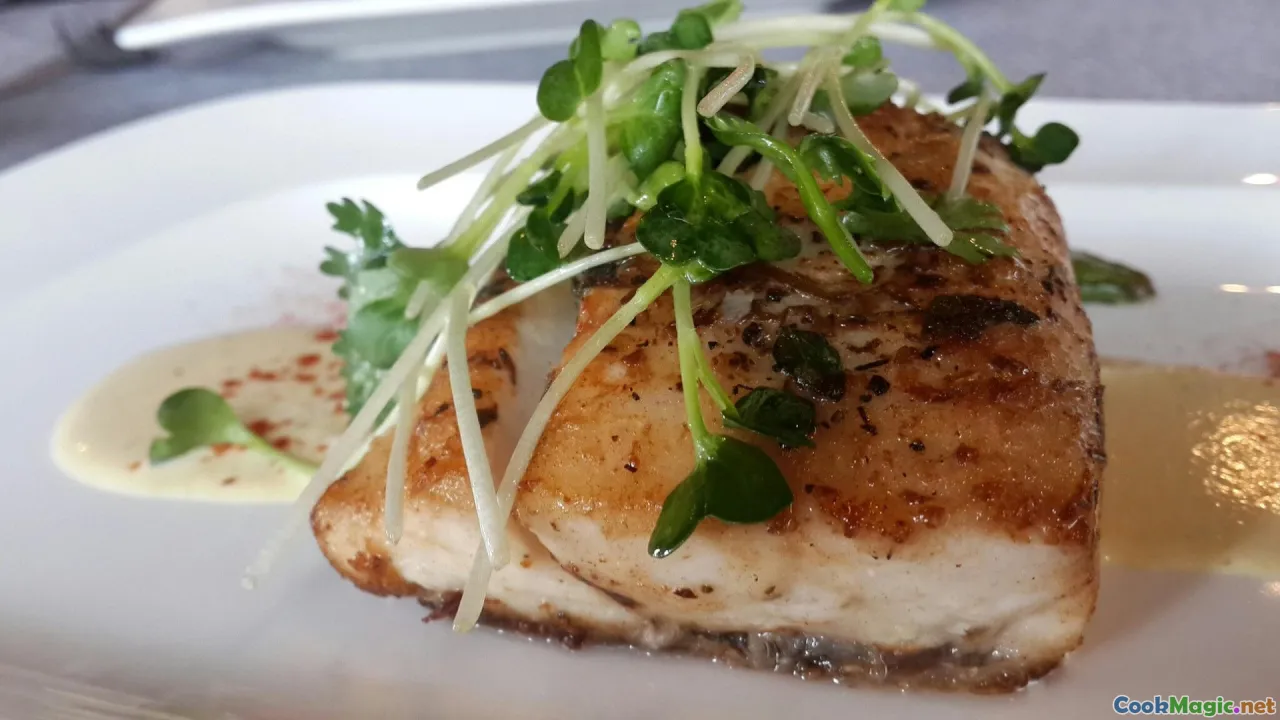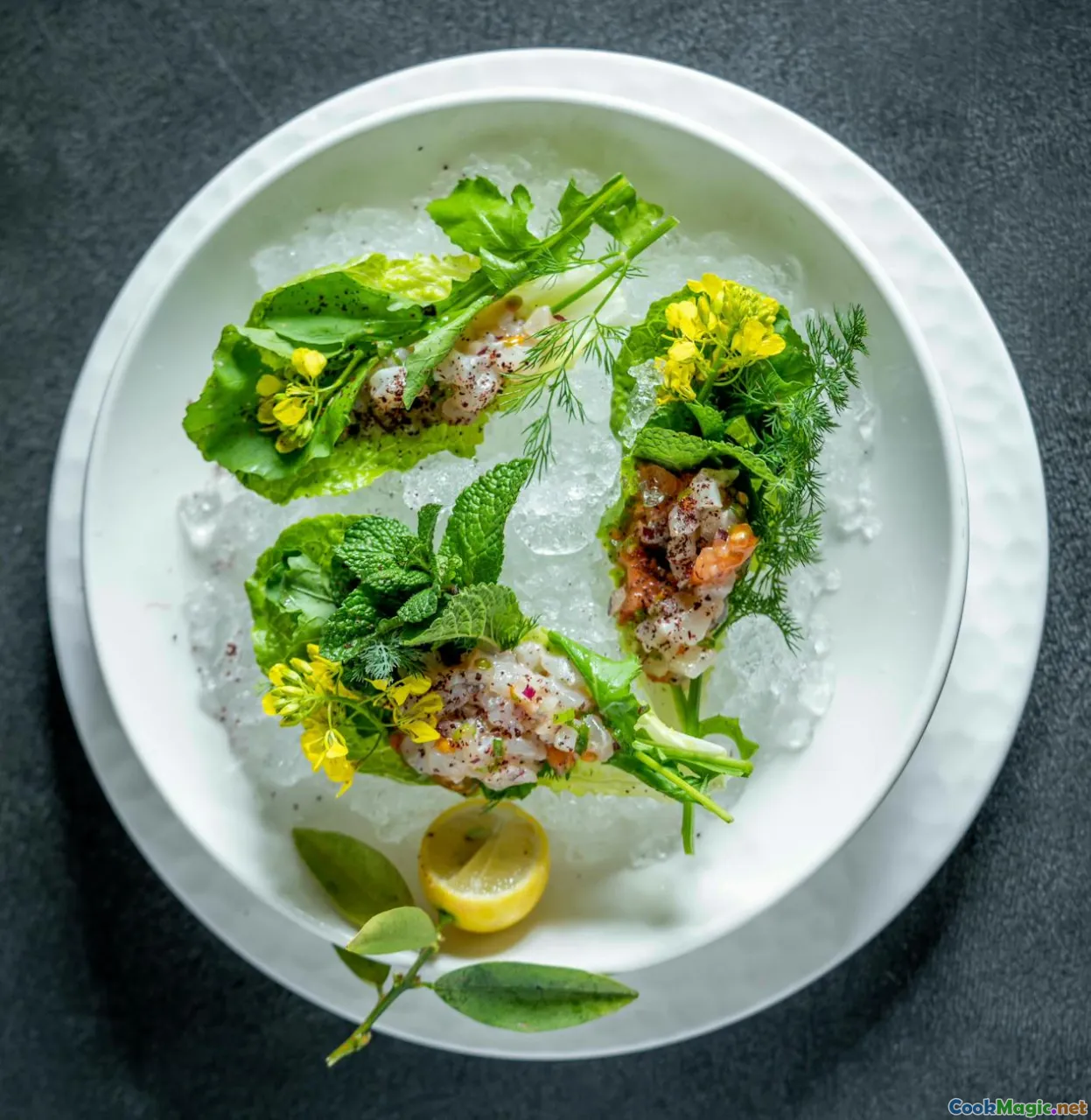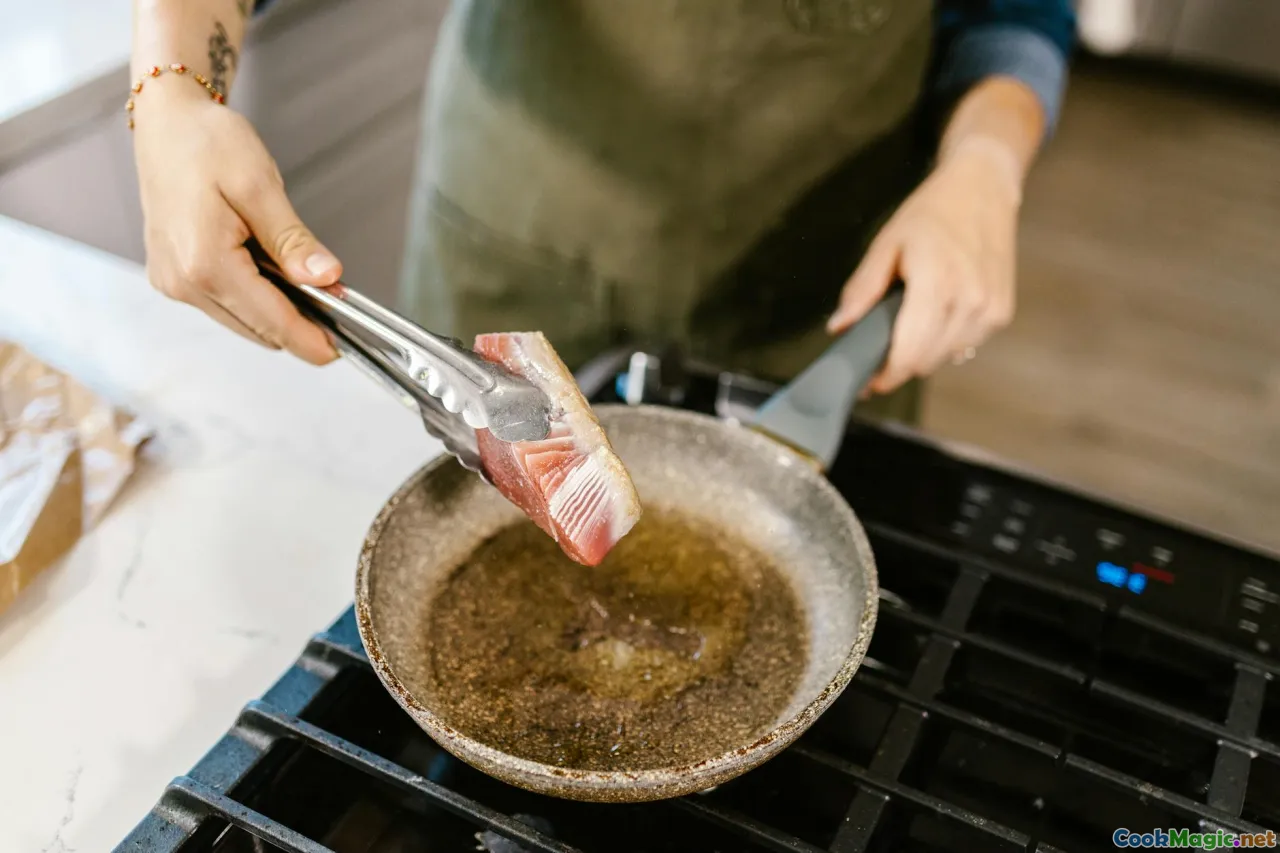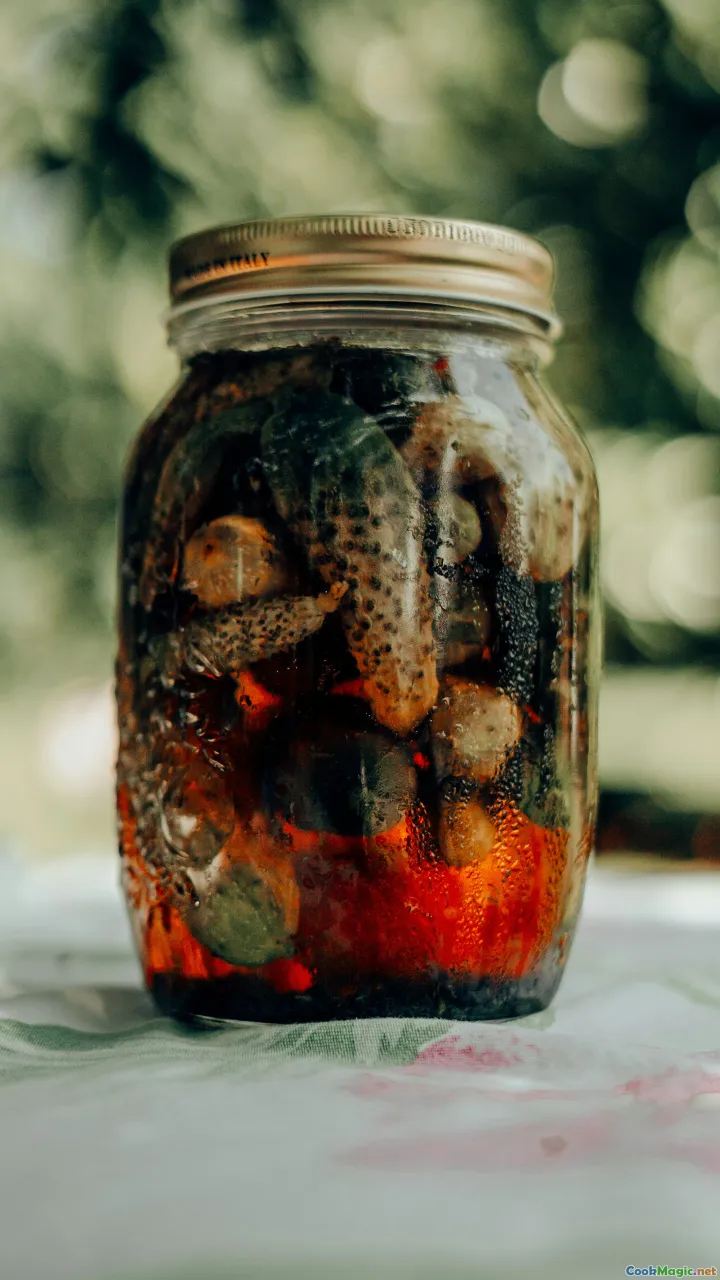Differences Between Jamaican Escovitch and Pickled Fish
12 min read Explore the distinctive methods and flavors that differentiate Jamaican escovitch from traditional pickled fish, celebrating Caribbean culinary traditions. July 15, 2025 00:05
The Vibrant World of Jamaican Fish Preservation: Escovitch vs. Pickled Fish
Imagine sitting on a sun-drenched Jamaican veranda, the warm Caribbean breeze carrying the aroma of spices and vinegars mingling with fresh seafood. It’s a sensory tapestry that speaks to centuries of culinary artistry—a reflection of the island’s history, culture, and soul. Among Jamaica’s treasured dishes, two preserved fish preparations stand out: Escovitch FishandPickled Fish. Though they share a preservation method involving vinegar, the differences in flavor, preparation, and cultural context are profound and worth exploring.
Let's dive deep into these two beloved Jamaican fish staples, unravel their secrets, and discover what makes each unique in the vibrant tapestry of Jamaican cuisine.
The Heartbeat of Jamaican Coastal Life: Cultural Roots of Fish Preservation

Jamaica’s love affair with fish is as old as its shores. Fishing has been integral to the island’s sustenance, economy, and cultural expression. For generations, local fishermen and home cooks alike perfected methods to preserve the catch, ensuring freshness and flavor endured beyond the day’s hustle.
Preserving fish with vinegar originated from the necessity to extend shelf life before refrigeration and freezing introduced modernity. Over time, simple preservation techniques evolved into vibrant culinary traditions. Fish in Jamaica isn’t just food; it’s a cultural symbol woven into everyday life, celebrations, and rituals.
Two of the most distinguished methods, Escovitch and Pickled Fish, exemplify these traditions, each with its own origins, regional spins, and narratives.
Differentiating the Basics: What Is Escovitch Fish?

Escovitch Fish is a lively Jamaican dish characterized by its crispy, fried fish topped with a tangy, spicy vinegar-based sauce. The fish is typically whole, such as snapper, grunt, or kingfish, cleaned and seasoned with salt, pepper, and a hint of lime before frying to golden perfection.
Once fried, the fish is dressed with a vibrant escovitch sauce made from seasoned vinegar infused with thyme, hot peppers, onions, carrots, and sometimes pimentos. The sauce is poured hot over the fish, allowing the flavors to meld while adding a fiery, vinegary punch. The result is a dish that balances crunchy textures with bright, piquant flavors, often served as an appetizer or main course with fried dumplings, yam, or festival.
Sensory profile: Imagine biting into the crispy coating of fish that yields to moist, flaky flesh beneath—an explosion of flavors with hints of sweetness from onions and carrots, spiced up with Scotch bonnet peppers, all brightened by the sharp tang of vinegar.
The Nature of Pickled Fish

Pickled Fish in Jamaican cuisine leans toward a more subdued, sour profile. This preparation involves marinating cooked fish—often soak-cooked or boiled—in a mixture of seasoned vinegars, sometimes with additionals like allspice, cloves, garlic, and hot peppers. The fish is preserved in sterilized jars or containers, then allowed to develop a deep flavor over days or even weeks.
Unlike Escovitch, where the texture of the fish remains relatively crispy and fresh, pickled fish is often softer, more tender, and imbued with the essence of seasoned vinegar and spices. It’s a dish with historical roots in Caribbean preservation techniques—developed to sustain fish through long sea voyages or periods without fresh supplies.
Sensory profile: Think of delicate, tender flakes of fish submerged in a fragrant, tangy marinade, with whispers of allspice and garlic that evoke comfort and nostalgia.
A Visual and Textural Comparison

The visual appeal of these two preparations provides a window into their respective worlds. Escovitch Fish, shimmering with crispy golden skin topped with a vibrant medley of onions, peppers, and carrots in a glossy vinegar sauce—each bite promising contrast: the crunch of fried skin against the sharp, tangy topping.
Picled Fish, by contrast, presents as a more subdued, mouth-wateringly tender dish. The fish, often displayed in a jar or platter, bears the soft, cooked flesh immersed in a slightly cloudy, spice-kissed vinegar—an inviting blend of textures from firm to delicate.
Texture-wise: Escovitch’s crispy exterior and firm flesh offer a satisfying bite, while pickled fish's softer, more delicate flakes lend themselves to a gentle, lingering tang—each with its own appeal depending on mood or occasion.
How to Make Authentic Jamaican Escovitch Fish at Home

Creating authentic Escovitch Fish is an art that balances heat, acidity, and crunch. Here’s a simplified guide:
Ingredients:
- Whole kingfish, snapper, or grunt
- Lime juice
- Salt and pepper
- Flour or seasoned flour for dredging
- Vegetable oil for frying
- For the Escovitch Sauce:
- Onion rings
- Carrots (Julienned)
- Scotch bonnet peppers
- Bay leaves
- Thyme
- Vinegar (white or apple cider)
- Allspice berries
- Hot pepper sauce (optional)
- Sugar (a pinch, optional)
- Fresh pimento berries (allspice)
Method:
- Prep the Fish: Clean the fish thoroughly, rub with lime juice, then season with salt, pepper, and thyme.
- Fry the Fish: Dredge lightly in seasoned flour, then fry in hot oil until golden brown and crispy.
- Prepare the Escovitch Sauce: Sauté onions, carrots, and hot peppers briefly in a small pan. Add vinegar, bay leaves, allspice, and a touch of sugar. Bring to boil; let simmer.
- Assemble: Pour hot escovitch sauce over the fried fish or serve sauce alongside.
This process yields a dish vibrating with Jamaica’s zest—perfect for sharing and storytelling.
The Complexity of Jamaican Pickled Fish at Home

Making Jamaican Pickled Fish requires attention to detail and patience. Here is a traditional approach:
Ingredients:
- Fresh fish (preferably salt fish, sardines, or mackerel)
- Vinegar (white or malt)
- Garlic
- Allspice, cloves
- Hot peppers
- Onions
- Carrots (optional)
- Seasoned salt
- Olive oil
Method:
- Cook the Fish: Typically boil or soak salt fish to remove excess salt, then cook to tender.
- Prepare the Marinade: Mix vinegar with garlic, allspice, hot peppers, sliced onions, and seasonings.
- Combine and Marinate: Place drained fish in sterilized jars, pour marinade over, ensuring coverage.
- Age and Store: Allow to sit at least 48 hours, ideally longer, to develop depth of flavor.
The result is a tender, flavorful fish that embodies Jamaica’s pioneering spirit of resourcefulness and culinary innovation.
When to Savor Which?
The choice between escovitch and pickled fish can hinge on mood, occasion, or even the weather. If craving a dish with crunch, spice, and immediate punch, Escovitch is your go-to—perfect for lively gatherings, brunch, or a quick snack. Its bright, sizzling flavors echo the energetic rhythm of Jamaican street festivals.
Pickled fish, on the other hand, offers a more contemplative, gentle experience—ideal for a leisurely Sunday meal or as part of a traditional Jamaican breakfast with bammy or fried dumplings. Its soft texture and deep flavors carry a comforting nostalgia, reminiscent of family feasts and seaside picnics.
Personal and Cultural Significance
As someone who has traveled through Jamaica’s coastal towns—sampling dishes made by fishermen’s wives, tasting homemade versions in rural kitchens—I am struck by how both dishes embody resilience, ingenuity, and community. They are not merely preserved fish; they are stories on plates, echoing ancestors’ resourcefulness and the island’s rich tapestry.
In Jamaica, these dishes also serve as cultural markers, connecting generations through shared recipes and rituals. Whether served at a high-end restaurant or a humble roadside stall, they evoke a sense of belonging and pride.
From the bustling markets of Kingston to the quiet seaside villages, the subtle dance of vinegar, spices, and fresh catch tells a story—a story of survival, celebration, and the unbreakable Jamaican spirit.
In exploring the differences between Jamaican Escovitch and Pickled Fish, we discover more than culinary techniques; we uncover a narrative of culture, history, and emotion, seasoned with flavor and tradition. Each bite is an invitation to connect with Jamaica’s enduring love for its land and waters, through dishes that have originated, evolved, and thrived across generations. So next time you enjoy these dishes, remember—they are much more than food—they are a vibrant pulse of Jamaican life.









